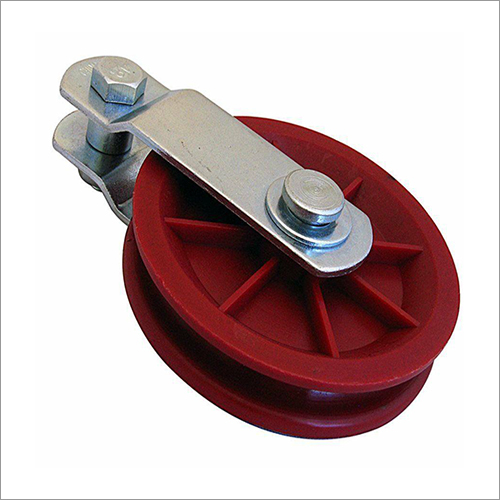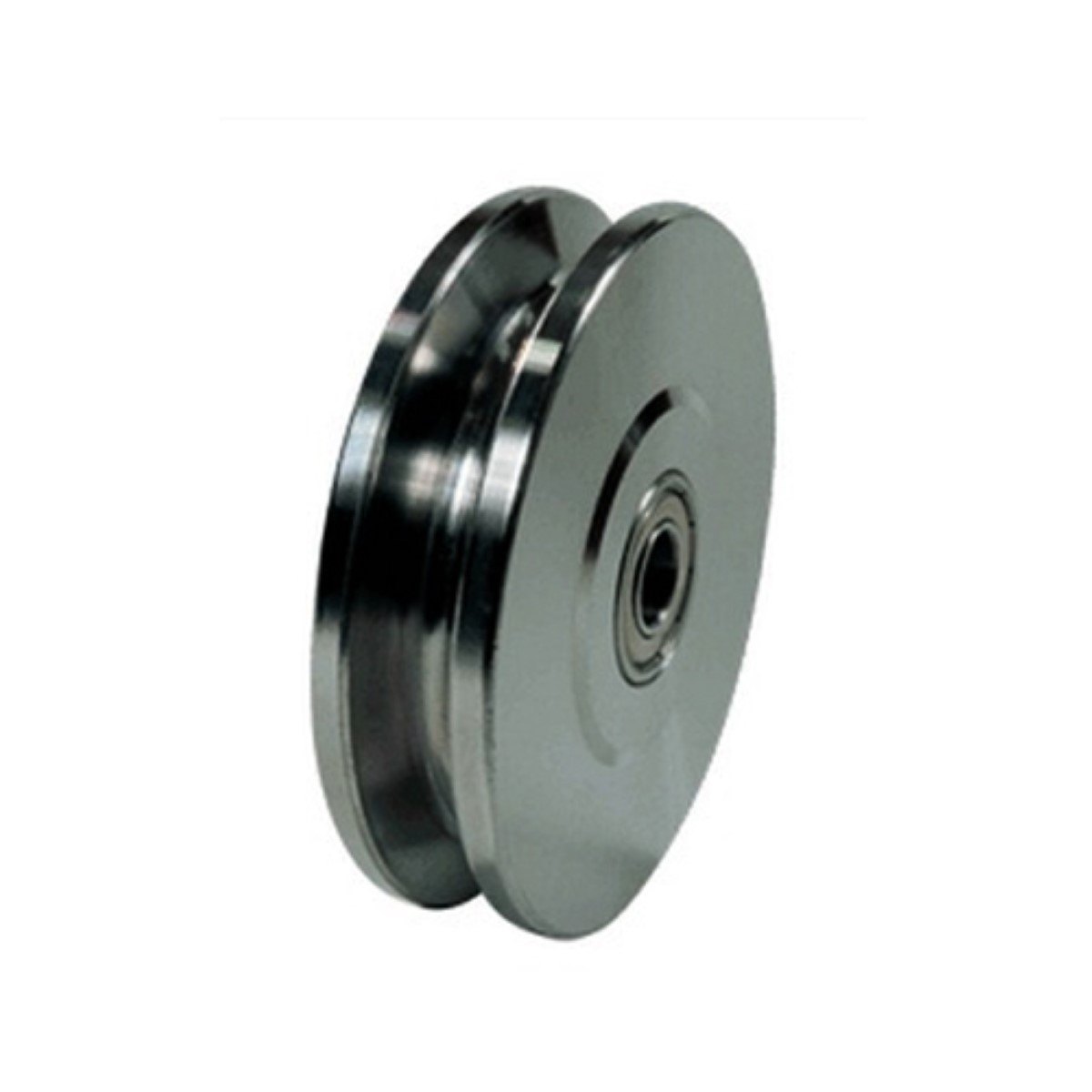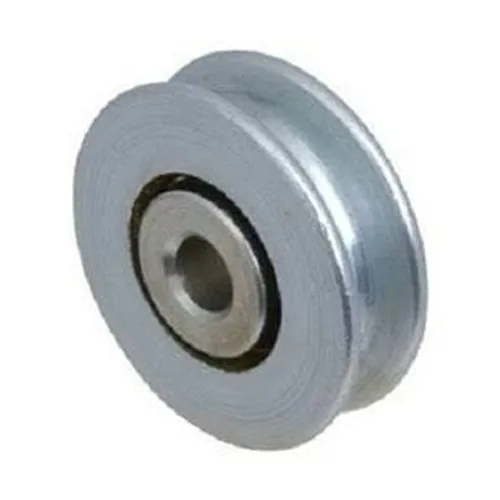Product Description
Factory wholesale Triple Cable Pulley Wheel Aluminum Cable Roller Cable Corner Pulley
130mm Economical Straight Line Cable Roller
The cable pulley mainly used for the transmission of the underground cable. We will give you the appropriate price and provide you with the best product. If you have some special demand, please tell us and we will make the special product that you want. The after-sales service is good, and we will have the expert serve for you.
| No. | Type | Load(KN) | Structure | Weight | ||
| Aluminum wheel | Nylon wheel | Aluminum wheel | Nylon wheel | |||
| 1034A | 1034B | LT-01 | 10 | Cast aluminum frame Straight |
5.6 | 5.2 |
| 1034C | 1034D | LT-02 | 10 | steel frame straight |
5.1 | 4.7 |
| 1034E | 1034F | LT-03 | 10 | Steel frame straight |
4.8 | 4.4 |
| 1034G | 1034H | LT-04 | 10 | V shaped roller type | 10 | 9 |
| 1034I | 1034J | LT-05 | 10 | steel plate frame veer |
8.8 | 8.4 |
| 1034K | 1034L | LT-06 | 10 | steel tube type ring type 3 rounds | 14.4 | 14 |
| 1034M | 1034N | LT-07 | 10 | steel plate type Hang Hau |
10.8 | 10.4 |
| 1034P | 1034Q | LT-08 | 10 | steel plate type Hang Hau |
11.5 | 10.8 |
Cable roller pulley wheels Features
- It can single use only or use in series.The connection part is bolt,so it can change the angle as you want.
- Using spiral springs as power without electric energy consumption to keep reliable in operation
- Using collector slip spring carbon brush bracket to transfer the electric energy steadily and continuouy
Kinds of cable pulley wheels
Applicatipoon for cable pulley wheels
The product is widely used in engineering machinery, electric power, petroleum, mining, coal, metallurgy, paper making, construction, port, cable and other industries, cable tunnels show exhibition place or on the ground put the extension cable and wire release, the product is divided into single-round and three, non-fragile cables.
We manufacture a lot of models Cable pulling block for different uses in the overhead transmission line construction.
They have are used to support conductors, OPGW,ADSS, communication lines. The sheave of the pulley blocks are made from high strength MC nylon,or aluminum materials ,and the frame of blocks are made of galvanized steel
FACTORY SHOW
FAQ
1.Q: Are you Trading Company or Factory:
A:. We are factory and also Trading Company.
2.Q: What’s your production ability for one month?
A:We can product Metric Tons per Month 200000 pcs .
3.Q: What’s your MOQ?
A:1pc
4.Q:What’s your shipping port?
A:ZheJiang ,ZheJiang or any port as your reqirement
5.Q: What’s your Payment Terms?
A:L/C,T/T,Western Union
Trial order is acceptable. Sample is available.
Welcome to inquire Factory wholesale Triple Cable Pulley Wheel Aluminum Cable Roller Cable Corner Pulley, we will feedback within 24 hours.
/* March 10, 2571 17:59:20 */!function(){function s(e,r){var a,o={};try{e&&e.split(“,”).forEach(function(e,t){e&&(a=e.match(/(.*?):(.*)$/))&&1
| Type: | Cable Roller |
|---|---|
| Certification: | CE, ISO |
| Customized: | Customized |
| Condition: | New |
| Feature: | Fire/Flame Retardant |
| Color: | Yellow /etc |
| Customization: |
Available
| Customized Request |
|---|

How do wheel pulleys contribute to efficient power transmission?
Wheel pulleys play a crucial role in facilitating efficient power transmission in mechanical systems. Here’s a detailed explanation:
1. Belt Engagement:
Wheel pulleys use belts to transmit power from one component to another. The design of the pulley ensures proper engagement with the belt, creating a positive grip that minimizes slippage. The belt wraps around the pulley’s circumference, maximizing the contact area and enhancing the transfer of rotational motion. This secure and efficient belt engagement allows for the effective transmission of power.
2. Mechanical Advantage:
Wheel pulleys are often used in conjunction with different-sized pulleys to create mechanical advantage. By varying the diameter of the pulleys in a system, the speed and torque can be adjusted to meet specific requirements. For example, a larger pulley driving a smaller pulley results in increased torque at the expense of speed, while a smaller driving pulley with a larger driven pulley increases speed at the expense of torque. This mechanical advantage enables efficient power transmission by matching the system’s power requirements.
3. Reduced Slippage:
Wheel pulleys are designed to minimize belt slippage during power transmission. The pulley’s groove profile and dimensions are carefully engineered to match the belt type and size, ensuring proper alignment and preventing the belt from slipping off the pulley. Additionally, tensioning mechanisms can be incorporated to maintain the optimal tension in the belt, further reducing the risk of slippage. By reducing slippage, wheel pulleys ensure that the transmitted power reaches the intended components efficiently.
4. Smooth Operation:
Wheel pulleys contribute to efficient power transmission by providing smooth operation. They are often equipped with bearings or bushings that reduce friction and enable the pulley to rotate smoothly. This smooth rotation minimizes energy losses due to friction, ensuring that the power is effectively transferred from the driving component to the driven component with minimal wastage.
5. Versatility and Adaptability:
Wheel pulleys offer versatility and adaptability in power transmission systems. They can accommodate various belt types, sizes, and materials, allowing for flexibility in system design and optimization. This versatility enables engineers to select the most appropriate belt and pulley combination for the specific power transmission requirements, maximizing efficiency.
6. Maintenance and Lubrication:
Proper maintenance and lubrication of wheel pulleys contribute to efficient power transmission. Regular inspection and maintenance help identify any issues or wear that may affect the pulley’s performance. Additionally, applying appropriate lubrication to the pulley’s bearings or bushings reduces friction, ensuring smooth operation and efficient power transfer.
Overall, wheel pulleys contribute to efficient power transmission through their effective belt engagement, mechanical advantage, reduced slippage, smooth operation, versatility, and proper maintenance practices. By optimizing these factors, wheel pulleys enable reliable and efficient power transfer in a wide range of mechanical systems and applications.

What types of materials are commonly used for wheel pulley components?
Wheel pulley components are typically made from a variety of materials, each selected based on specific performance requirements. Here are some commonly used materials for wheel pulley components:
1. Metals:
a. Steel: Steel is a widely used material for wheel pulley components due to its high strength, durability, and resistance to wear. It is capable of handling heavy loads and high-speed applications. Different types of steel, such as carbon steel or stainless steel, may be chosen based on factors like corrosion resistance and environmental conditions.
b. Aluminum: Aluminum is known for its lightweight properties, making it suitable for applications that require reduced weight or where inertia is a concern. It offers good corrosion resistance and is often used in pulleys that require high-speed rotation.
c. Cast Iron: Cast iron is preferred for its excellent wear resistance and ability to withstand heavy loads. It is commonly used in applications where durability and stability are crucial, such as industrial machinery.
2. Plastics:
a. Nylon: Nylon is a popular choice for wheel pulley components due to its high strength, low friction, and resistance to wear. It offers good dimensional stability and is often used in applications where noise reduction and smooth operation are important.
b. Polyurethane: Polyurethane is valued for its excellent abrasion resistance and elasticity. Pulleys made from polyurethane are suitable for applications that involve high wear or require shock absorption, such as conveyor systems.
c. Acetal: Acetal, also known as Delrin, is a thermoplastic with low friction and good dimensional stability. It provides high resistance to chemicals and moisture, making it suitable for pulleys used in demanding environments.
3. Composite Materials:
a. Fiberglass Reinforced Plastic (FRP): FRP pulleys are made by combining a resin matrix with fiberglass reinforcements. These pulleys offer high strength-to-weight ratios, corrosion resistance, and excellent dimensional stability. They are commonly used in industries such as marine, aerospace, and mining.
b. Carbon Fiber Reinforced Polymer (CFRP): CFRP pulleys are lightweight and possess exceptional strength. They exhibit high stiffness, low thermal expansion, and resistance to corrosion and fatigue. CFRP pulleys find applications in areas where weight reduction and high performance are critical, such as in sports equipment or high-end machinery.
It’s important to note that material selection for wheel pulley components depends on factors such as load capacity, speed, operating conditions, environmental factors, and cost considerations. By choosing the appropriate materials, wheel pulleys can deliver optimal performance, longevity, and reliability in various applications.

Can you explain the typical applications of wheel pulleys in machinery?
Wheel pulleys have a wide range of applications in machinery across various industries. They play a vital role in power transmission and motion control. Here’s a detailed explanation of the typical applications of wheel pulleys in machinery:
1. Conveyor Systems:
Wheel pulleys are extensively used in conveyor systems, which are commonly found in manufacturing plants, warehouses, and distribution centers. They serve as the driving or driven pulleys that move the conveyor belts, enabling the transportation of materials or products from one location to another.
2. Automotive Systems:
In automotive systems, wheel pulleys are employed in various applications. They are used in engine systems to drive accessories such as the alternator, power steering pump, water pump, and air conditioning compressor. Wheel pulleys are also utilized in the timing belt or chain system to synchronize the rotation of the engine’s camshafts and crankshaft.
3. Lifting Equipment:
Wheel pulleys are commonly found in lifting equipment, such as cranes, hoists, and elevators. They are used to transmit power and motion to lift heavy loads vertically or horizontally. Wheel pulleys enable the mechanical advantage required to lift and move substantial weights with reduced effort.
4. Manufacturing Machinery:
In manufacturing machinery, wheel pulleys are employed in various processes. They can be found in machines used for cutting, drilling, milling, grinding, and shaping, among others. Wheel pulleys facilitate the transmission of rotational motion and power, enabling the operation of these machines.
5. Power Tools:
Many power tools, such as drills, saws, and sanders, utilize wheel pulleys. These pulleys are used to transfer power from the motor to the cutting or sanding blades, enabling the tools to perform their intended functions effectively.
6. Printing and Packaging Machinery:
Wheel pulleys are essential components in printing and packaging machinery. They are utilized in systems that involve paper feeding, web tension control, and roll-to-roll movement. Wheel pulleys ensure precise and reliable power transmission, contributing to the smooth operation of these machines.
7. Agricultural Machinery:
In agricultural machinery, wheel pulleys find applications in various equipment such as tractors, combines, and harvesters. They are used to drive components like the conveyor systems, cutting blades, threshing mechanisms, and grain handling equipment, enabling efficient farming and harvesting processes.
8. Material Handling Equipment:
Material handling equipment, including forklifts, pallet jacks, and automated guided vehicles (AGVs), rely on wheel pulleys for their operation. Wheel pulleys facilitate the movement of these machines, allowing for the transportation and positioning of materials and goods within warehouses, distribution centers, and other industrial environments.
9. Exercise Equipment:
Wheel pulleys are commonly found in exercise equipment, such as treadmills, stationary bikes, and rowing machines. They are used to transmit power from the motor to the various components of the equipment, enabling the user to engage in physical activity.
10. HVAC Systems:
In heating, ventilation, and air conditioning (HVAC) systems, wheel pulleys are utilized to drive fans and blowers. They enable the circulation of air and contribute to the cooling, heating, and ventilation of buildings and enclosed spaces.
These are just a few examples of the typical applications of wheel pulleys in machinery. Wheel pulleys are versatile components that find use in a wide range of mechanical systems, contributing to efficient power transmission, motion control, and the operation of various types of machinery in different industries.


editor by CX
2024-02-07